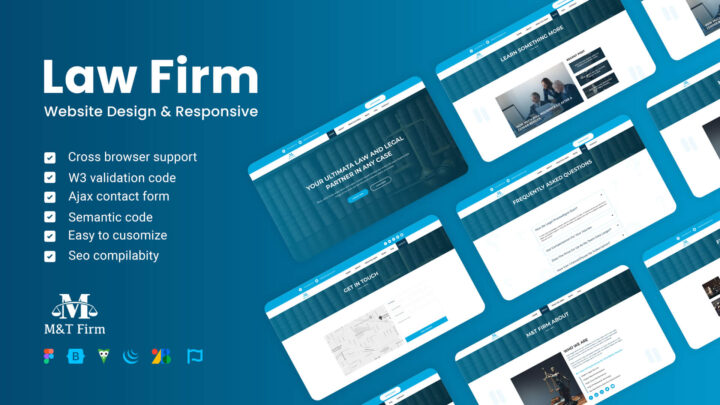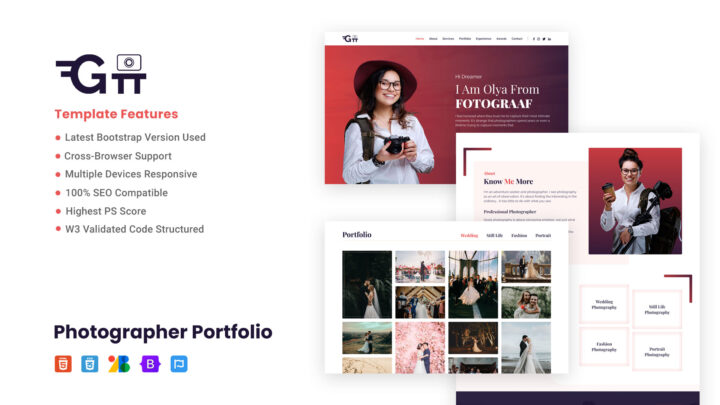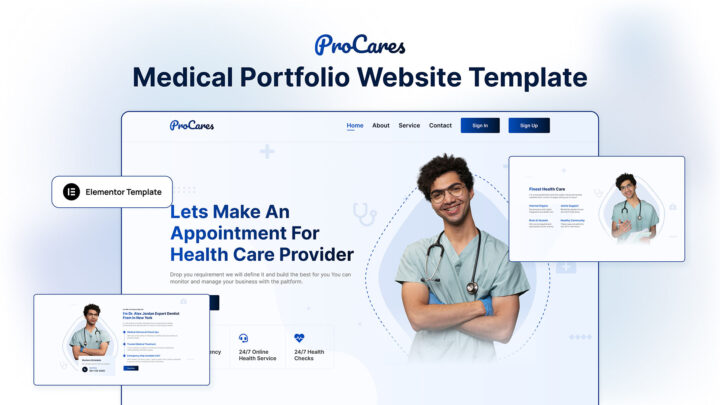
Why Mobile Optimization is Important in Web Design
Mobile optimization refers to designing and developing a website to provide an optimal viewing and interaction experience for mobile device users. With mobile internet usage now exceeding desktop usage globally, having a mobile-friendly site is no longer optional – it’s imperative for reaching today’s on-the-go users.
A mobile-optimized site is designed responsively to adapt seamlessly across mobile devices with different screen sizes. It utilizes touch-friendly navigation, minimizes load times, and streamlines content delivery for comfortable reading and navigation on smaller screens. The rise of mobile has transformed how people browse and interact with sites, so optimizing for these preferred mobile experiences is vital for providing value, engagement, and conversion.
With mobile optimization, users will be able to navigate and consume content. However, pages may load slowly, links and buttons may be hard to activate, and text may be uncomfortably small. This leads to high bounce rates and missed opportunities, as mobile visitors quickly become frustrated and abandon a site that doesn’t meet their needs. Considering that more searches now happen on mobile devices than desktops, not optimizing is no longer an option for businesses that want to be discoverable and accessible to today’s mobile-first market.
Smaller Screens
Mobile devices have significantly smaller screens than desktop monitors and laptops. The average smartphone screen is only about 5-6 inches diagonally, whereas computer monitors are often 19 inches or more. This means designers have much less real estate to work with on mobile devices.
It’s essential to streamline and simplify the layout and content for mobile users. Designs need to be responsive and adapted to fit the smaller viewports. This often requires rethinking navigation, using hamburger menus, decreasing font sizes, stacking elements vertically instead of horizontally, and reducing unnecessary content.
With less screen space, it’s critical to focus on the most essential information and actions users need to accomplish their goals. Supplementary content may need to be moved lower in the page hierarchy or removed altogether on mobile. The layout should facilitate quick scanning and easy access to key features. White space, proper information hierarchy, and concise writing help enhance usability, given the limited screen sizes.
Touch Targets
Touch targets refer to the areas on a mobile screen that users can tap with their fingers. This includes buttons, links, form fields, and any other tappable elements. On mobile devices, touch targets need to be large enough for users to easily tap them without accidentally touching something else.
The recommended minimum size for touch targets is around 48 x 48 pixels. This provides enough room for most users to accurately tap the target, even those with more giant fingers and mobility impairments. Anything smaller than that can be frustrating and challenging to use.
When touch targets are too small, users may accidentally activate the wrong links or buttons. This leads to errors and a poor user experience. Enlarging touch targets improves usability and accessibility for all mobile users.
It’s essential to test your site on actual mobile devices to ensure touch targets are functional. Things that appear fine on a desktop display may be too small when viewed on a tiny mobile screen. Optimizing touch targets for “fat finger friendliness” should be a key priority in mobile web design.
Page Speed
Page speed is critical for mobile users. With mobile devices often loading pages over 3G, 4G, or unreliable wifi networks, slow page speeds can lead to frustration. Research shows that 53% of mobile users will abandon a page that takes longer than 3 seconds to load.
Optimizing page speed delivers a better user experience. Some ways to improve mobile page speed include:
- Enable compression and caching to minimize page size
- Optimize images by reducing file size without losing quality
- Minify CSS, JavaScript, and HTML files
- Eliminate render-blocking JavaScript
- Use a content delivery network (CDN) to distribute resources
- Defer non-critical assets that aren’t needed for the initial page load
With page speed optimization, sites see higher user engagement, lower bounce rates, and increased conversions. Fast mobile pages lead to happy users who are more likely to return and recommend your site.
Responsive Design
Responsive web design is a crucial aspect of mobile optimization. It involves creating a website that dynamically adapts and responds to different screen sizes and devices. The layout, images, fonts, and other elements resize and rearrange themselves as the screen size changes. This creates an optimal viewing and interaction experience for users regardless of whether they are on a desktop, laptop, tablet, or smartphone.
Some key reasons why responsive design is essential for mobile:
- It provides a consistent experience across devices. Users don’t have to pinch, zoom, or scroll horizontally to view content, which leads to improved usability and satisfaction.
- It eliminates the need to build and maintain separate mobile sites or apps. One responsive site can work seamlessly on all devices, streamlining development and maintenance.
- It ensures proper rendering on different mobile screen sizes. Content and functionality stay intact and appear intact on smaller screens.
- It allows tapping on touch targets. Buttons and links are large enough for fingers to tap without zooming in, improving usability.
- It enables faster load times. One flexible codebase and design are more optimized than multiple sites, and quicker speeds enhance user experience.
- It improves SEO and eliminates duplicate content issues. Rather than separate mobile URLs, there’s a single URL for all devices to index.
In summary, responsive design is a must for delivering an optimal mobile experience to users. It provides flexibility, consistency, and improved usability across all devices. As mobile usage continues to grow globally, having a responsive website is vital for any business or organization.
Mobile Navigation
Navigation is one of the most important elements for optimizing mobile. The small screen sizes mean navigation needs to be simple, easy to access, and minimize taps.
- The hamburger menu icon has become a standard for mobile navigation. Tapping this icon opens a menu overlay, allowing access to site sections and pages. This keeps navigation hidden until needed, minimizing clutter on small screens.
- Dropdown menus are problematic on mobile. The touch targets are too small, and they require too many taps to access nested menu levels. Avoid dropdowns on mobile.
- Keep navigation menus shallow, with no more than 2-3 levels. Deep nesting will frustrate mobile users.
- Ensure menu tap targets are large enough, at least 48 CSS pixels. This makes them easy to tap with a finger.
- Scrolling should be minimized in navigation menus. Use accordions to collapse menu sections if needed.
- Also, consider more extensive bottom navigation menus on mobile. These are easy to reach and tap with thumbs for one-handed use.
- Focus navigation on the most important pages and tasks. Avoid cluttering with minor pages on mobile.
- Test navigation menus on actual mobile devices during development. Ensure menus work as expected across various mobile browsers.
With some forethought, navigation can be optimized to provide a great mobile experience. Follow these best practices, and avoid “desktop-first” navigation pitfalls on mobile.
Mobile Forms
Mobile forms require careful consideration for the small screen size. Forms with numerous fields and complex layouts can be frustrating for users on mobile devices. The key is to simplify forms as much as possible.
To reduce clutter, only include the most essential fields. If specific fields are optional on desktop, consider making them optional on mobile as well. Multi-page forms may be necessary for lengthy applications or surveys.
Make sure form fields are large enough for fingertips, and add ample spacing between fields so they feel clear in mobile optimization. Dropdown menus can be challenging to use on mobile, so radio buttons or checkboxes may be better choices when applicable.
Form validation and error messages need to be optimized for mobile. Display validation errors briefly near the relevant field instead of all together at the bottom. This makes it easier for the user to correct errors one by one.
Most importantly, test forms thoroughly on real devices. Submit the form and make sure the keyboard does not end up covering the submit button, which is a common pitfall. Forms are crucial for conversions and registrations, so the mobile experience needs to be seamless. With mindful design choices, mobile forms can be simple and user-friendly.
Tap Targets
When designing for mobile, it’s important to ensure tap targets are large enough for users to tap with their fingers easily. Phones’ small touch screens can make it frustrating if links and buttons are too small or clustered too close together.
According to Google’s recommendations, tap targets should be at least 48 CSS pixels tall and wide to provide enough room for users to tap them accurately. This minimum size helps account for people tapping with fingers instead of precise mouse movements.
Spacing between tap targets should also have appropriate padding, generally at least 8 pixels. Tightly packed links or buttons can lead to errors and accidental taps on the wrong elements. Proper spacing makes the desired tap target unambiguous.
Testing tap targets on actual mobile devices during development is important to ensure they are usable. Things that may look fine on a desktop display can be much smaller when viewed on a 5-inch phone screen. Optimizing tap targets for fingertips is crucial for mobile sites and apps.
Testing Mobile
Thoroughly testing a website on real mobile devices is critical for ensuring a positive user experience. While simulators and emulators can provide an approximation of how a site will perform on mobile, nothing beats hands-on testing on physical devices.
There are a few key reasons why real-world mobile testing is so important:
- Mobile browsers render pages differently than desktop browsers, so what looks okay in a simulator may have issues on an actual phone or tablet. Subtle CSS and JavaScript bugs often only appear on real devices.
- Mobile connection speeds vary widely, from blazing fast 5G to sluggish 2G networks. Testing on real devices with different connections exposes performance problems.
- Mobile screen sizes and resolutions are diverse, ranging from small phones to large tablets. A site needs to adapt smoothly across all screen sizes.
- Mobile users interact with screens by touching, swiping, and tapping. Testing touch targets and tap interfaces is critical.
- Hardware performance varies significantly between low-end budget devices and high-end flagship phones. A site should work well on both.
To cover the wide range of mobile experiences, aim to test on both iOS and Android devices, older and newer models, tablets and phones, and budget to high-end devices. Testing on wifi, as well as cellular data, provides insights into varying connection speeds.
While emulators can support early testing, hands-on mobile testing should be a standard part of the quality assurance process before launching any website or web application. The mobile web is diverse, and the only way to ensure a site works beautifully across it is through comprehensive real-world testing.
Conclusion
Mobile optimization is more critical than ever for businesses with an online presence. As mobile usage continues to grow globally, having a website that is optimized for mobile devices provides many benefits. Here are some of the critical reasons for mobile optimization is important today:
- Increased engagement and conversions: A mobile-friendly site leads to a better user experience, lower bounce rates, and more conversions. If a site is complex to use on mobile, visitors will quickly leave.
- Better rankings: Google and other search engines prefer sites optimized for mobile. A responsive design can improve SEO rankings.
- Staying competitive: Mobile is the dominant way users access the Internet, so not having a mobile site can put a business behind competitors. An unoptimized site risks losing mobile traffic.
- Enhanced brand image: A website that works seamlessly on mobile reflects well on a company’s brand. It shows that the business cares about user experience and evolving technology trends, which builds trust and loyalty with customers.
- Future-proofing: Mobile usage will only continue to grow. Optimizing for mobile now future-proofs a website as more users shift their browsing habits. It’s a necessary step for any online business.
The takeaway is that mobile optimization provides significant benefits today and is essential for any company with an online presence. By making their website mobile-friendly, businesses can engage and convert more users while staying competitive in the modern digital landscape.
- Categories: Reading
Recent Posts
Recent Products
Share This Post
Subscribe To Our Newsletter
Get More Update and Stay Connected with Us



















